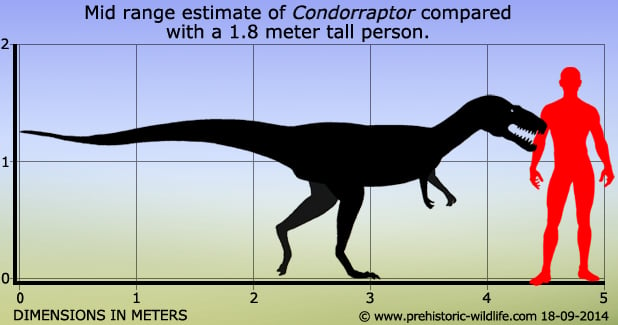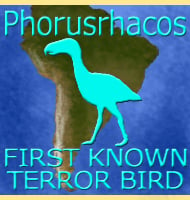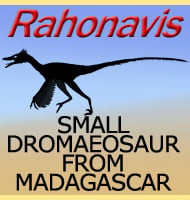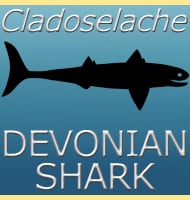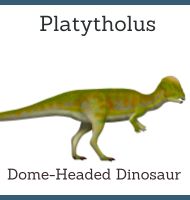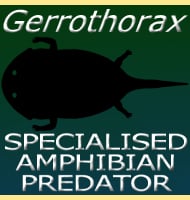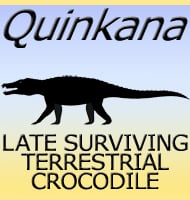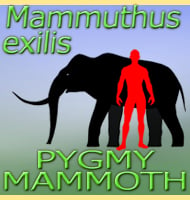In Depth
Initially described from a tibia (one of the lower leg bones), a second discovery in 2007 revealed much more of the skeleton of Condorraptor, allowing for a clearer picture of Condorraptor to come to light. Condorraptor was a mid-sized theropod that may have been similar to the famous Megalosaurus, the first dinosaur genus to be ever named. In addition to this Condorraptor may have been related to the similarly sized Piatnitzkysaurus which is also known from the same formation as Condorraptor. As a midsized theropod, Condorraptor would have been a predator of other dinosaurs, quite probably early sauropods and ornithischian dinosaurs.
The name Condorraptor raptor is often confused as being a reference to a condor bird, but in actuality the condor part of the name is actually a reference to Cerro Condor, a village in Chubut Province near where the holotype fossils of Condorraptor were discovered.
Further Reading
- Osteology and relationships of a new theropod dinosaur from the Middle Jurassic of Patagonia. - Palaeontology 48(1):87-110. - O. W. M. Rauhut - 2005. - A fragmentary theropod skull from the Middle Jurassic of Patagonia. - Ameghiniana 44(2):479-483. - O. W. M. Rauhut - 2007.
